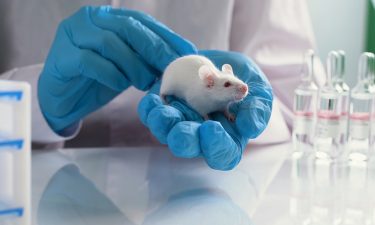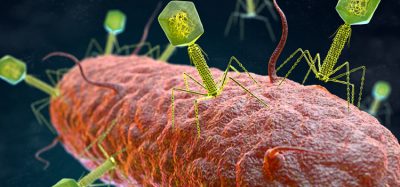Spatial genomic and transcriptomic imaging in drug discovery
Posted: 10 August 2021 | Drug Target Review | No comments yet
In this interview, read about the compilation of a new high-resolution cell atlas of the mouse brain using spatial genomics and transcriptomics.


Drug Target Review‘s Deputy Editor Victoria Rees spoke with George Emanuel, scientific co-founder at Vizgen, to find out how a new mouse brain receptor map was developed using single-cell spatial genomic and transcriptomic information. Also discussed are how this freely available resource could help other scientists in their studies.
Can you briefly explain why single-cell spatial genomic and transcriptomic studies are a significant area of research for drug discovery?
George: We can think about single-cell spatial genomics within the context of genomics technologies. It is helpful to look back and consider the impact that the previous generation of genomics has had on the industry before I can explain the extra value that single-cell transcriptomics offers and how it might advance the field.
Essentially, biological systems achieve their functions by controlling expression of many genes; it requires a highly multiplexed measurement methodology to be able to characterise the expression of this many genes. Measuring the expression of thousands of distinct transcripts, as we saw with next-generation sequencing (NGS), is essential for understanding the biology. Different groups of transcripts create different proteins to achieve different cellular activities. If you are only able to measure a few transcripts, you are not able to really understand the full picture.
Furthermore, biological systems are compartmentalised down into individual cells. These cells are constantly communicating with each other by excreting different molecules and detecting the signals secreted from other cells, as well as from the broader environment.


Tissues do not function because cells are aimlessly floating around in droplets, they function because cells are intricately spatially organised. So, it is important to understand where each individual cell resides within the functioning tissue. Overall, understanding what cells are there is a good first step, but the ability to understand the cellular identity as well as the exact positions, is the next critical layer of information needed to fully understand a biological system. We therefore consider that the single-cell spatial genomic approaches layer additional spatial information on top of the foundation afforded by NGS and single-cell sequencing methods. We believe the kinds of discoveries that could be made with this could be pivotal in drug discovery.
Can you describe the mouse brain receptor map you developed?
George: To build the mouse brain receptor map, we measured nearly half a billion transcripts across almost a million cells by measuring three positions across the mouse brain with three biological replicates for each position. This is one or two orders of magnitude larger than a typical droplet base type of experiment. The measurement was performed using a panel of 483 genes, including ~50 canonical mouse brain markers and ~430 G protein-coupled receptors (GPCRs) and receptor tyrosine kinases (RTKs) to map out the spatial organisation of these mouse brain receptors with cellular context.


We decided to release such a large dataset because it demonstrates of the power to provide single-cell information with spatial resolution, but also can serve as a resource to mine to understand the spatial organisation of a critical class of genes across the brain.
The output included with this data release is generated by the MERSCOPE platform. This includes the primary spatial genomic information, the list of all the transcripts detected across each of these slices, including the transcript identity and its exact spatial position within the tissue for each of the 500 million detected transcripts. Additionally, since MERSCOPE performs cell segmentation, it enables single-cell analysis. From the segmentation, each measurement creates a cell-by-gene matrix, indicating how many copies of each gene were found within the segmented cells, similar to the output from single-cell sequencing and can be used to classify cell type and cell state. However, for the spatial measurement, we also include a file indicating the XY position of each of these cells along with the full segmented cell boundaries. To enable downstream image analysis, this technology also creates high-resolution mosaic images to add the context of what the tissue actually looks like.
We released this mouse brain receptor map, making it freely available for anyone interested in exploring spatial genomics. We really hope this will help researchers understand the role of GPCRs across the brain, in addition to understanding the power of spatial genomic detail.
How did you collect this data and what kinds of technologies did you use?
George: We created the mouse brain receptor map using the MERSCOPETM spatial transcriptomics platform that is powered by multiplexed error-robust fluorescence in situ hybridisation (MERFISH) technology.
We really hope this will help researchers understand the role of GPCRs across the brain”
It is worth noting that the MERSCOPE platform collects the data without the need for any additional technologies or expensive instruments such as downstream sequencing. The data shared in the map is same output type that comes from of the MERSCOPE instrument; you put the sample in and get the spatial transcriptomic profiling data out.
What challenges did you face during the research and how did you overcome them?
George: MERFISH technology was already well established, with demonstrations of MERFISH constructing detailed atlases of a number of different brain regions. Constructing our mouse brain receptor map was just a matter of scaling up. Consequently, we did not encounter too many challenges with obtaining MERFISH measurements on mouse brain slices using the MERSCOPE platform.
However, the main challenge with developing the platform was to find a way to make this technology accessible by the broader research communities, in a way that is as easy for them to use as possible so they can focus on their biological research rather than building up complex instrumentation. To that end, there have been challenges that we have been working to address to simplify certain parts of the workflow so that researchers can efficiently construct the same sort of datasets within their own labs. To achieve the dataset with nine slices, each slice takes approximately one day on MERSCOPE.
How can this publicly available information benefit researchers with respect to disease research or drug discovery?


I believe we will see a broader adoption of spatial genomic research over the next couple of years. This is really a teaser of what is to come over the next few years and a first demonstration of the next generation of spatial genomics technologies, so that researchers can start to think about how this new technology can be applied to their particular research question.
The evolution of these technologies creates a need for new bioinformatics tools to analyse and interrogate the data. Thus, by providing this dataset, we hope to seed these computational groups with material to start to build out new computational tools. This ultimately gets a kickstart to transcriptional spatial genomic technology.
Related topics
DNA, Genetic Analysis, Genomics, Imaging, Next-Generation Sequencing (NGS), RNAs, Sequencing
Related organisations
Vizgen
Related people
George Emanuel








